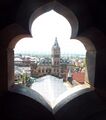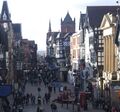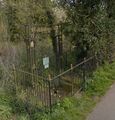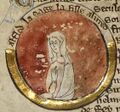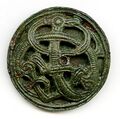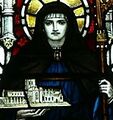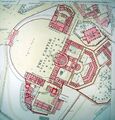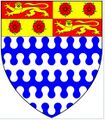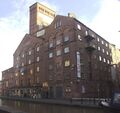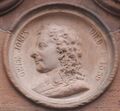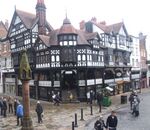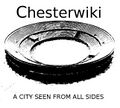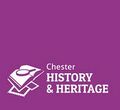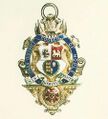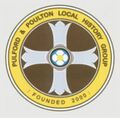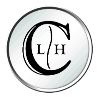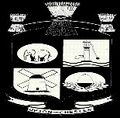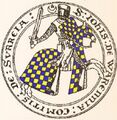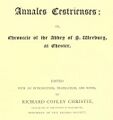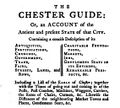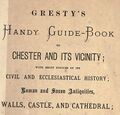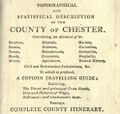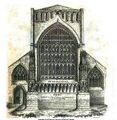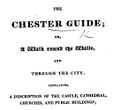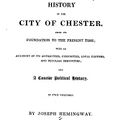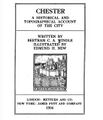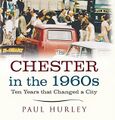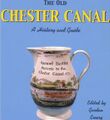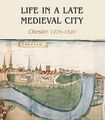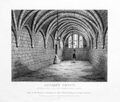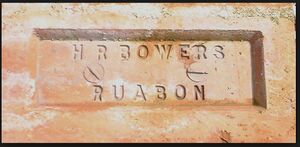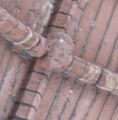Main Page
Chesterwiki now has a Facebook group: HERE. If you spot a "clanger" on this site please don't hesitate to use it to point out mistakes!
Welcome to Chester
If you found this site looking for information on the history of Chester and what there is to see of that history, welcome. If you are looking for something specific there is a search box in the sidebar to the left, and some navigation items as well.
What this site is about
"Those who cannot remember the past are condemned to repeat it" - George Santayana.
The main purpose of this wiki is to illustrate how much history is all around us and often hidden in plain sight. Walking through the streets of the city of Chester it is obvious that there are a lot of historic sights to see, but the streets of Chester are a museum which can benefit from a better guidebook. Much the same can be said of anywhere, including our local rivers such as the Gowy and the River Dee. Unashamedly, this opening page might be a confusing set of connections to others, but bear with us, Chester is a City with an incredibly rich set of links into history both on a national and local scale, and many of these "traditions" are reflected in the art and architecture of the city. In addition to the history, the Historiography of Chester is a fascinating subject - some of what is often believed about Chester may not be true, and often for interesting reasons. The site tends to illustrate wider history with reference to Chester, not to make Chester any more important than it was, but to illustrate and discuss wider history with reference to familiar day-to-day experience.
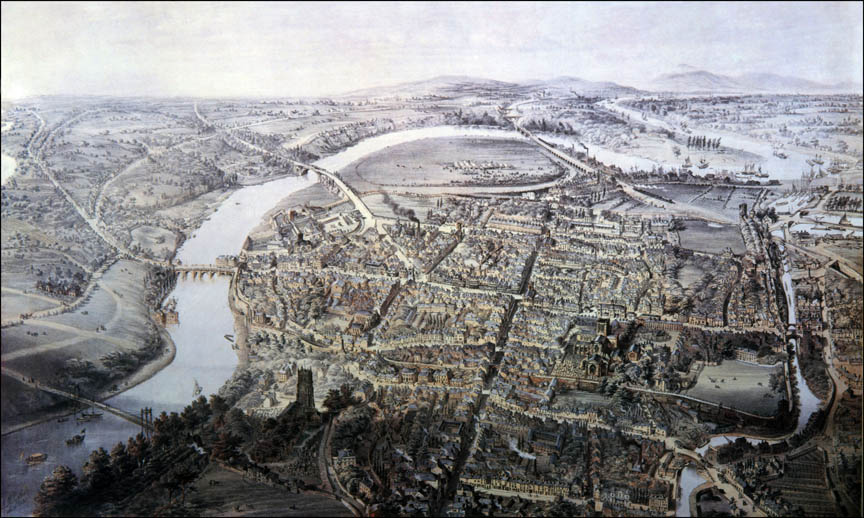
The site aims to be the definitive "Wiki" all about the City of Chester and the River Dee. It was started in 2007, with a detailed Timeline, in-depth information about architecture and articles illustrating that Chester is "not just all about the Romans". It was hoped that local historians would contribute.
To find out more, try any of the links underneath this gallery of pictures. If you like us, or have any questions, then why not use the "Facebook" page to comment. This site is very much a "mash-up" with articles and links that lead down many "rabbit holes".
Stuart Chester and the Civil War
The Timeline
- "I have come to Chester, madam, I cannot tell how, and far less can I tell how to get away from it." - James Boswell (as reported in a letter to Samuel Johnson October 22, 1779),
Starting Points
The history of Chester has many interconnected threads. Here are a selection of starting points for exploring it that mostly begin with something other than the Romans. Click on the underscored link beneath the thumbnail to go to the page. Each page lists other "related pages" at its foot, and had a list of online links to further information on other sites. On many of the pages there is a description of what can be seen today by visiting locations in Chester:
A Chester Lightning Tour - a walking tour which takes in the main historical sites and has links to further detail.
Amphitheatre - the largest stone-built Roman military amphitheatre in Britain, a guide and history.
Battle of Chester - fought in about AD 616, this may well be the earliest English battlefield whose site is actually known.
Saxon - just when the Saxons (and the language which became English) arrived in Chester isn't known for sure.
St Johns - Chester's original Cathedral and a sight not to be missed.
Plegmund - Alfred the Great's archbishop may have lived just outside of Chester.
Æthelflæd - Alfred the Great's daughter and her connexion with Chester.
Viking - the influence of the Vikings on the history of Chester is often overlooked.
Ælfgar - played an important part in the political rivalry between the Houses of Godwin and Leofric prior to 1066.
Hermitage - did Harold II survive the Battle of Hastings and eventually come to live out the rest of his life in Chester?
Palatinate - just how was the governance of Chester / Cheshire different from the rest of England?
Cathedral - a history of the institution and the construction of the building.
Chester Castle - a historical description from the Normans to the present day.
Polychronicon - a history of the world written in Chester which was widely read in the Middle Ages.
Execution at Chester - the occasionally grim history of "judicial murder" at Chester and the related crimes.
Middleton - three Chester brothers crucial to the early East India Company and all "lost at sea".
Cowper - a look at Chester through the eyes of a single family
Battle of Hoole Heath - events around the Battle of Rowton Heath: a major disaster for Charles I.
Thomas Baldwin - an intrepid balloonist from Chester and his very scientific flight.
Chamber's Book of days - the folklore of Chester as described by Chambers, and some background.
Industrial Revolution - how it affected Chester.
Canalside - a walking tour along the canal through Chester with maps and descriptions of the points of interest.
Charles Moston - drunken accident or murder? A look at this curious case and the lives of the canal-folk involved.
Portpool - a guide to Chester's port area and the site of a famous rail disaster.
Town Hall - a history of the building and it's somewhat inaccurate historical sculptures.
Clockmaker - stories behind some of clocks in Chester and its clockmakers.
Chester and Ireland - a relationship which goes back to the Romans and gave Chester an important role in Irish Sea commerce and culture.
Postcard - the social media of its day, what the postcard can tell us about history.
Groves - a walking tour along the River Dee at Chester with notes on what to see along the way.
Chester Pageant - how Cestrians viewed their own past through pageants in the 20th Century.
Historiography - what historians and guides get wrong about Chester.
Architectural Glossary - a guide to the features of buildings illustrated by a guided tour around the city center.
What's New or Updated
There is often something new on here. Clicking on "recent changes" in the menu on the top left will reveal the very latest changes (and provide some indication as to whether the weather in Chester is good or bad - lots of writing means rain, ice or snow). Here is a list of selected recent articles which is updated from time-to-time a longer list of articles written or updated in the past year can be found at Updates or by clicking on the "NEW" icon:
- Early Medieval: a list of pages on this site;
- Quarters: Rabbit holes to explore;
- Battle of Hoole Heath: the latter stages of Rowton Moor;
- Peploe: solving the mystery of a coat of arms, partly;
- Edgar Garston: donator of drinking fountains;
- Murengers: resposibility for the City Walls through the ages;
- Saxons: when was English first spoken in Chester?
- Chester and Ireland: historical links;
- Middleton: Pirates or pioneers for the East India Company;
- Merchant Adventurers: the overseas trade of Chester;
- The Groves: a guided tour of the riverside;
- Witch Trials (and hangings) at Chester;
- The Acid Tar Lagoon of Hoole - not a popular tourist destination;
- Æthelflæd: and her impact on Chester;
- Viking: Vikings and Chester;
- Architectural Glossary: from Abacus to Wattle and Daub;
- Battle of Brunanburh: fought near Chester?
- Gildas, Bede, Nennius and Gerald of Wales: four early writers;
- The Mold Cope: a fascinating story with links to several separate legends;
- Charles Kingsley and Victorian paternalism;
- Time: more on electric clock pioneer Robert Lewis Jones of Hoole:
- The River Gowy: From a stone elephant via a lot of mills to a ruined abbey;
- Vale Royal: Poisoned daggers, fake history, drugs, sex and murder;
- Booksellers and others in the print trade in Chester;
- Chester Clockmakers and Chester public clocks: - these clocks often tell more than just the time;
- The Battle of Chester: c616 - who fought in it and why?
- Thomas Baldwin: of Hoole Hall, early balloonist and inventor;
- Road Transport: how routes developed and evolved over the years, from prehistoric to modern;
- Cheshire Castles were built by the Normans to defend a natural border defined by the flooding of the Dee and Pulford Brook;
- Celia Fiennes was a Chester tourist in 1698 and viewed the city from the coupola atop the then recently completed Exchange building;
- Explore Elizabethan Chester using a point and click map;
- Cholmondeley's house in Grosvenor Park was the subject of an early case of "fake news";
- Portpool: Chester's "Old Port" area;
- Bruen: Puritans in Chester and a small step on the road to Civil War;
Anything in blue/purple is a link and will either take you to an external site or elsewhere on this wiki.

Start Exploring Chester
If you are really just wanting to wander around, try doing a "mouse-over" on the balloon view above and click when you see something which interests you, or click on City Walls to go to another map with even more places to visit. Another way to navigate is via the Site Index. If you are interested in a specific one of the Neighborhoods in Chester, just click on the " Neighborhoods" text and you will be taken to the index page for that category. There is also a description of the city in terms of it's four Quarters.
Sometimes, as on the left here you will see a picture of a person walking. Clicking on the person will take you to a map showing where the thing being discussed is - more often than not both a modern map and an older one. The one on the left is set up to take you to maps showing the position of St Johns - the original cathedral. We have a page linking to the various Walking Guides both on this Wiki about Chester and those found elsewhere.
In some places you will see navigation icons like the compass rose on the right. These are used to navigate through a series of pages on related topics.
The little symbol on the left will take you to the relevant part of the Timeline. You can "mouse over" to see where you are going.
If you get lost (but are still in Chesterwiki), then the top link in the menu-bar at the left hand side will bring you back here (as will clicking on the Amphitheatre icon at the top of the page).
And if you have any general comments, or questions - use our facebook page (click on the icon to the right) N.B. some of the comments in our old "guestbook" were so old they had been translated from Linear A, Aramaic, Greek or Latin - a few modern ones would be nice!
Visiting Chester for the first time
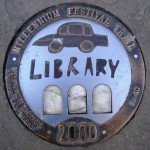
There is a lot to see in Chester. The Architectural Glossary page of this site features a short "perambulation" as an introduction to the distinctive architecture. A Chester Lightning Tour is an attempt to see the main sights of the city if you have a single day, but can be spread over several.
For a first visit, a walk around the complete City Walls and a detailed look at The Rows can take a whole day. The Millennium festival trail takes in many of the highlights, but by no means all of them (the Roman Festival Trail will see many of the Roman sites and The Mystery Tour will visit much of "Haunted Chester"). On a short trip it is worth a visit to the Grosvenor Museum, and possibly even the Military Museum. Unfortunately, Chester Castle can (except for the popular "open days") only be seen from the outside at present, but the Town Hall may be open and the Cathedral now offers the spectacular view of Chester from above. One thing which should not be missed is the unique Roman sculpture, the Minerva Shrine in Edgar's Field.
Given an extra day, Chester Zoo (the largest Zoo in the United Kingdom) should certainly not be missed. Chester has reasonably good Public Transport and the most popular "Cab" firm is "King Kabs" (when the races are on at the Roodee, the wait for a cab can be 30-40 minutes - and their phone system has a ghastly American accent). The Weather is generally quite good due to the fact that Chester is sheltered from the prevailing wind by the Welsh mountains at the head of the River Dee.
Chester is provided with many "mainstream" shops, but Chester Market (behind the Town Hall) is worth a visit (this section needs an update!), as well as some of the unique and "odd-ball" shops like the "Cheese Shop". Lowe's jewelery shop on upper Bridge Street has links to the Titanic.
Using this site
It is worth remembering that this site is always going to be out of date.
The site is (in part) built about the Timeline, which traces links (some of which are tenuous) between the history of Chester and the River Dee and the wider world. The point of the timeline is not to make Chester appear any more important than it is, but simply to provide a place to start other journeys through history. A Short History is expanded upon in a series of Articles which focus on specific themes, places and characters. The Books page has links to books about Chester, many of which are available online as part of the Google Books project and other archives, often as free "e-books". The Maps page deals with old maps of Chester (or have a look here), and if you want to walk around the City Wall, our City Walls page may add to your experience. The Rows of Chester also have their own section, and if you are interested in Chester Castle, the Norman Earls of Chester, or Roman Chester we have something here too.
The Norman Earls of Chester were always deeply involved in politics, following a tradition that arises in the House of Leofric towards the end of the Dark Ages, and continues through the dynastic marriage between Harold II and that house. Harold is said by some to have survived after 1066 and ended his days in the Hermitage at Chester. Closely connected to the ruling dynasty of England, and frequently at war with them, the line of Norman Earls continued until Henry III appropriated the Earldom for the Crown. If the final Norman Earl, John Canmore, had a son, that son (whose mother would have been Elen ferch Llywelyn, daughter of Llywelyn the Great), or possibly a grandson, that child would have had a legitimate claim to the throne of Scotland as well as the Earldom of Chester - and very good Welsh connections. Had the Earldom of Chester continued in this manner, Edward I would have faced serious problems in both his attempts to conquer Wales and his wars with Scotland.
The influence of the Earls on history did not end with the death of John Canmore. In later centuries members of the Cheshire gentry would try to validate their positions in society by claiming various Earls as ancestors, and it might even be said that this reflected an interest in ancestry amongst the Cheshire gentry that bordered on obsession and led to the creation of Ormerod's noted History of the County.
While this site is not about family history, many of the stories of Chester and Cheshire involve family history issues, feuds, etc. We sometimes include links to family history sites as these can be interesting, amusing or simply illustrate how downright wrong things can be. See, for example, the Elliott page.
Welcome to Chesterwiki

"Wikis" are an example of collaborative, user-generated content - Wikipedia is the best known example. Not everything you read in a Wiki may be true: someone may have gone in there and said "the earth is flat" - its up to you to check. For an example of how this site works click on Heronbridge.
If you want to know about the history of this site (or how to set up your own) see; Chesterwiki. The site started in 2007, and despite some problems along the way is still going strong.
We are not the only website about Chester. You might want to visit:

- http://www.chesterwalls.info/ - written by Chester's best informed city guide, this really is worth a look. Call him if you want a guided tour, but don't miss his site if you are going to walk around the City Walls.
- https://www.facebook.com/old.Liverpool - a very interesting site about Chester (despite the name!) - many old photo's and useful snippets.
- http://aroundchester.blogspot.co.uk - a really nice blog about Chester.
- https://thejoesmoechester.wordpress.com/ - another blog.
- http://www.medievalchester.ac.uk/index.html - hardcore history, but a very well-made website.
- http://www.chestertourist.com/ - put together by the incomparable James (who also has a good hotel guide on his site).
- http://en.wikipedia.org/wiki/Chester - a bit like us, then again a bit different (but do give them a visit) - they even have a link to us!
- http://www.visitchester.com/ - the official tourism site, very useful (nice if they gave us a link).
- http://www.geograph.org.uk/search.php?i=49810749&page=1 - Geograph on Chester: lots of pictures.
- http://www.docbrown.info/docspics/lakes/lakespage22.htm - "Doc Brown" has an eye for detail.
- http://chesterthenandnow.markcarline.co.uk/ - Mark Carline compares old images of Chester with modern images taken from the same location.
- https://thechesterblog.com/ - at times very, very amusing.
Chester is, apparently, particularly well-represented by on-line resources, but unfortunately these come and go as both individuals and the local council change their sites around. If a link is broken - that is just the way it is.
The Best Other "Unofficial" Sites on Chester
Chester has a wealth of history resources. Some of these are "hobby sites", others from bona-fides history groups. Explore at your own peril and remember just because it is on the internet does not mean it is true! If you have a local website that isn't anything commercial and it is not listed here then please do consider getting in touch so we can list it (use the Guestbook).
Individuals
Virtual Stroll by Steve Howe;
Chester Memories (appears dead);
Local Interest
Local History
Chester, and its environs, has a number of Local History Societies and other resources. Here are just some of them (reciprocal links are always nice!):
Quick Links to the online "papers" in Chester
As well as the "unofficial" sites, "mainstream" Newspapers in Chester are all available online for free - no sign-up, just "click and go". Here is a list of links to "news sources":
- "Chester Chronicle" - had Hemingway as its most non-PC editor in the 1820's. Now its only available online (and updated frequently each day) - it even has its own "cludged-up" icon on the right. It is just a pity it is clogged up with ads, spam etc (you can switch them off in their "cookies page").
- "Chester First"; (appears dead)
- "Chester Standard" - with genuine page turning animation and sound. It is almost so real that you could wrap fish and chips in it.
- "In Your Area": news agglomerator, but full of ads.
- "Everything Chester": "a one-stop-shop for the latest Chester news online";

Some Earlier Writers On Chester
Click on the name under the image and go straight to a free "e-Book" of these guidebooks from over the years:- (NB the Books page opens up many more books). The early guidebooks tend to follow a familar pattern of deriding previous guides and then copying wholesale from them, often word for word. The ones listed here are a selection of what appear to be the better informed (for sheer knock-about comedy Hughes takes the prize, while Hemingway wins on snob value). Using these references is not without difficulties. For example, all available copies of Hemingways "Panorama" have a date of 1836 and his "History" was apparently written in 1831. However the "Panorama" appears to have been written earlier than the "History"; as some descriptions in the "Panorama", such as that of the Infirmary (which was modified in 1830) are correct in the "History" (1831) - he even provides plans - but wildly out-dated in the "Panorama" (supposedly 1836) which describes the Infirmary as it was before 1800. Another example of the adage "History does not repeat itself, but historians do" is the succession of errors about the "Recorders Steps" (apparently built for the convenience of someone already dead). It is worth noting that the work of Ormerod is published right in the middle of a cluster of other books on Chester. Ormerod is perhaps the best known, but differs from the others in that is much more concerned with the history of the gentry of Cheshire rather than a description of the City - which made it a best-seller to the status-hungry gentry.
Ketcham Home Movies: Europe 1951 features Chester starting at 48:51 min into the video. There are many other video guides to Chester - some good, some bad.

Other useful books on Chester
These links only give partial views of the contents in most cases (or none at all), but these are some of the more useful resources on Chester, and more accurate. If you are in Chester then most can usually be obtained from the book/giftshop at the Grosvenor Museum - or the Tourist Information center by the Town Hall - together with several others. There are some guidebooks to Chester which are very dubious or superficial (none of these are listed below), and suffer from the problem that once you read a paragraph or two that is just plain wrong, you begin to doubt the accuracy of the rest of the book. One of the reasons for starting this Wiki rather than writing yet another guidebook is that there are perhaps enough guidebooks already, and if we make a mistake we can at least correct it, or add new content if some new detail is spotted. (NB the Books page opens up links to many more books)
Chester Through Time Hurley and Morgan 2010
The Old Chester Canal edited by Gordon Emery
Chester, A History (2014) by Simon Ward
Real Chester by Clare Dudman
A-Z Chester by Mike Royden
Haunted Chester by David Brandon
Companion to Chester by Roger Stephens
Autumn Chester by David Favager
Explore the Architectural History of Chester
One of Chester’s most distinguishing features is The Rows. These are galleried walkways that run the along the four streets that meet at the High Cross. These four streets, each of which leads to one of the principal City Gates of Chester, are listed below:
The Streets category will open the way to most of the city center streets and their interesting history.
Chester had some amazing local architects towards the end of the 19th Century, these included John Douglas ("if you seek his monument, look around you") and Thomas Meakin Lockwood (if you seek his monument, it is in St Johns).

It seems that almost every house in The Rows has its own story to tell - follow the links beneath the images to learn more about some of the more interesting examples...
Leche House (1603-1625)
Bishop Lloyd's House (1890/1615)
Stanley Palace (1928/16thC)
The Falcon (1982/c1180)
Bear and Billet (1664)
History is all around us and Chester probably has more things of historical interest per square mile than many other places - whether that is social, political or military history. What's even better is that in Chester history is particularly well documented. However, in some cases it is easy to miss - many people will note the Eastgate clock, but fewer will see the memorial to Owen Jones nearby, catch sight of the retired sea-captains porthole in a wall above, know of the goings-on at the "King's Arms Kitchen" that stood close by, or realise that "Fleshmonger's Row" ended next to the Grosvenor Hotel, site of some dubious political chicanery by the ever so interesting Grosvenors (they even form the basis for a Sherlock Holmes story). The "Chester Look" or "English Vernacular Revival" preserved some of most interesting architecture in England, as well as creating some of the most extreme "Mock Tudor". Chester is not generally thought of as a "canal town" or a "railway town", but in many ways it is - and it played its part in the "canal bubble" and "railway mania" that were precursors of the "dot com" boom and crash of the 1990's.
Explore the River Dee - from source to sea

The River Dee flows through Chester and has had a major effect on its history, as well as the history of the places along the rest of its course. The River Dee (Welsh: Afon Dyfrdwy) flows 110 miles from it's source to Hilbre Island. Travelling through Wales and England and also forming part of the international border between them, the river rises in Snowdonia, flows north via Chester and discharges into an estuary between Wales and The Wirral. We have a section of this site devoted to the geology and history of the River Dee:
- Upper Reaches: from the source of the river at springs on the slopes of Dduallt above Llanuwchllyn in the mountains of Snowdonia, through Wales, to its emergence from the Vale of Llangollen.
- Middle Reaches: this long stretch of the meandering river drops in height by only a few feet.
- Lower Reaches: below Chester to Hilbre Island and the sea; the river is now in "old-age" and while there is little erosion a lot of material is deposited. In the case of the River Dee this deposition has had a significant impact on the economic development of Chester, effectively turning a major port into a relatively quiet backwater.
Nowadays, the Dee is one of the most regulated rivers in Europe, it supplies more water for public supply than the whole of the English Lake District and two-thirds of the river water is abstracted before the River Dee reaches the weir at Chester. The natural flow of the River Dee during most summers is insufficient to sustain this rate of abstraction, so a series of reservoirs have been constructed to store excess water available in wintertime and release it back into the River Dee during drier months. This system of low-flow regulation was used by Thomas Telford at the beginning of the 19th Century in order to guarantee a supply of water to the Ellesmere Canal. Telford constructed sluices at the outlet of Bala Lake to control the flow of the Dee downstream so that there was always sufficient water to supply the canal where it started at Horseshoe Falls.
Become a contributor (no, we are not asking for money)
The scope of this site is mostly restricted to the city of Chester the local geology and the River Dee. Occasionally the site goes a little further such as when discussing the rivalry between the ports of Liverpool and Chester and the signal station chain built between Liverpool and Holyhead by the mechants and ship-owners of Liverpool: one site on the chain was located on Hilbre Island at the mouth of the River Dee and an inventor of part of the technology used was the General Manager at Chester Station.
A "wiki" is a linked set of pages which anyone can edit and expand. This freedom allows for unique expression and helps foster interesting and new ideas in an organic and very dynamic way. The emphasis here is on "anyone". You do not need to be a PhD. It's also an example of so-called "creative-commons", where people spend some time to make something and then share and share it alike without worrying too much about ownership. The benefit you get in return is that you have free access to the content generated by others. So, if you see something you think is inaccurate or incorrect, you have the power to change it. If you see that something is incomplete, you can add more information, either on the page or by adding a link to elsewhere. You can also create completely new pages of content and tie it into the rest of the site. Likewise, others have the power to veto/edit your changes. It is a delicate balance but one which ultimately leaves the users with the content they most want. Never be afraid to change something or try something new! All changes can be "rolled back" if you make a mistake as every page has its editing history preserved.
Signing-up does not mean you will be bombarded with "spam". It just means you can have a unique user-name, and a page to say a little about yourself (if you wish). And it costs nothing.

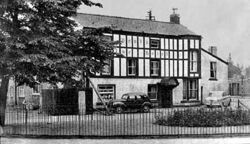
We want you to help with this site (we have been going since 2007):
Once you are signed-up, the Chester Wiki Guide will give you an introduction to creating and editing pages. Edit and add anything you wish (within the policy guidelines). However, please don't simply copy content from any of the other websites about Chester (such as ChesterWalls and ChesterTourist), as it will save a lot of typing to simply link to those as appropriate. And please don't add advertising, that is against the terms of use of the free hosting service that we use.
The page we would really like to expand upon is that on the Grosvenor Museum. This is one of the best "small museums" in the country (and has nothing officially to do with this website).
Writing articles
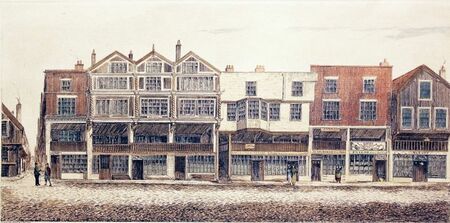
This is really easy. If you think that it would be a good idea to write about "Thorntons" then why not? There is the building itself (39 Eastgate Street - it used to be the "Green Dragon"), and all those stories about the hauntings. Chester is forever changing and we hope this site will help the people pf the future see what it looked like in the past. Hanshall in 1816 (his full book can be found on the Books page), describes how the rows were beginning to change even in his day:
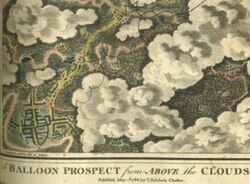
- To the front cf the street was a clumsy wooden railing and immense pillars of oak supporting transverse beams over which were built the chiefly of wood which hung over the street and in some places nearly met in centre. A little above the top of the row run heavy slated sheds called Pentices. These are removed and within the last twenty years the streets have assumed a new and more pleasing appearance. Many houses have been taken down which on being rebuilt were to the street which was made considerably higher decorated with a neat iron railing. These improvements are becoming pretty general in Bridge street and Eastgate street but the wooden antiquity of Northgate street and Watergate street remains unaltered, and is likely to continue so for some time. The views of the different streets as they at present stand are very ably delineated in Panoramic sketches by Mr Batenham of Chester, an artist who deserves a more extensive patronage than he receives, and whose works will one time or other become valuable to every lover of the relics of past days.
Perhaps in 2216, two-hundred years hence, people will be referring to Chesterwiki in the same way that we refer to Hanshall and Batenham - wouldn't you like to be part of that?
Adding links
Links both out of and into Chesterwiki help tie things together (none of the sites linked to below are in any way affiliated with ChesterWiki). Any links which involve the local council are expected to be "broken" as they frequently mess about with their web pages;
Links are important because they can lead the reader on to new journeys of exploration and to content which can help them form their own views about specific facts. "Broken links" are an endless problem with websites such as this. Sites get de-listed because their owners stop paying fees, lose interest, or even die. Many of the sites are preserved on the "Wayback Machine", but then we need to change the link to go to that archive. If you are reading a page and spot a mention of something you know an interesting link to why not add it, either as an embedded link in the text or in the "Sources and Links" section on most pages. Please do try to avoid blatant commercial links - this is not a commercial website and the links on the right of this page (if you are not using an Ad-block add-on) only pay for the free hosting we use: the unspeakably excellent SHOUTWIKI;
Pictures
What we realy need is pictures. Many of the sites mentioned on this site are up the River Dee, even as far as the head-waters at Dduallt, high on the moors above Bala, close to the extinct volcano on Rhobell Fawr. There are photo's on "Geographica" etc, but we would like some images with no potential copyright issues.
Wildlife

Monitoring suggests a severe decline in the UK house sparrow population, recently estimated as dropping by 71 per cent between 1977 and 2008 with substantial declines in both rural and urban populations. Several reasons have been given for this:
- predation by domestic and feral cats - which could account for the death of half of the total population of sparrows each year;
- predation by magpies and feral pigeons (mostly of eggs);
- toxins produced by the use of unleaded petrol - in Paris, where diesel is cheaper than petrol, there has been far less reduction;
- changes in farming practices and the widespread use of pesticides in parks and gardens;
- changes in building practices - leading to fewer nesting opportunities - bird boxes can help this;
Results show that cats equipped with a bell returned 41 per cent fewer dead birds and 34 per cent fewer dead mammals than those with a plain collar. If you don't own a cat, but have a bird table, we have found that a solar-powered, ultrasonic cat repellent device, will help stop cats killing birds and using a garden as a litter tray. The better ones, (which will cost you about £10-20 depending on where you buy them from) have both an ultrasonic sound emitter and a flashing light, and being solar powered, do not need batteries replacing or recharging.
If cats are using your garden as a toilet you could try quoting the Human Rights Act at the council office. The result is something akin to showing a crucifix to a vampire. The local authority may tell you that cats cannot trespass so the owners aren’t liable and there is nothing they can do – blah blah blah – anything for a quite life. At this point you tell them you wish to make a formal complaint under Article 8 of the Human Rights Act. Article 8 (when they ask) covers your right to respect for private and family life from your local authority – specifically you believe they are failing you in your right to enjoy your property because your garden is being used as a giant litter box by the neighborhood cats and they are refusing to do anything about it. This is going to cause a bit of a stir and much whispering and nodding in your general direction but at some point they will believe they have solved their problem (the problem being you claiming your human rights are being violated) by telling you that the cat owners are also covered by Article 8 because they have the right to enjoy their property and the offending cats are their property. You then tell them you believe they are now in breach of the Human Rights Act Article 14 because you are being discriminated against. They are putting the cat owners right to Article 8 above your right to Article 8!
Printing/Downloading Pages
We don't (yet) have a downloadable "app" which makes possibly relevant information on this site available in a geo-located form while walking around Chester with a "smart-phone". That is "work in progress". The best that can be managed at present is to convert a page to a pdf and download it. For those adept at online stuff, you may be able to do something with Kiwix.
The box below explains how to do the simple PDF conversion and turns up on several pages on this Wiki (although it should work for any page). It is not a perfect solution as links will not work.















